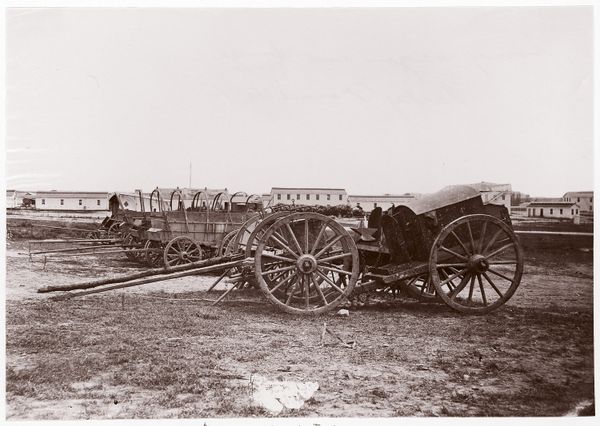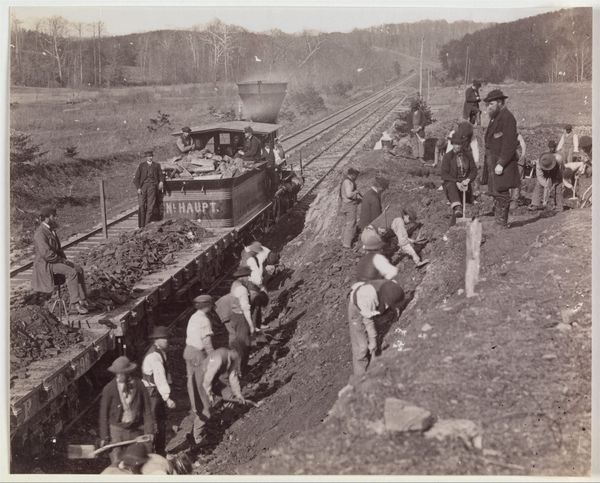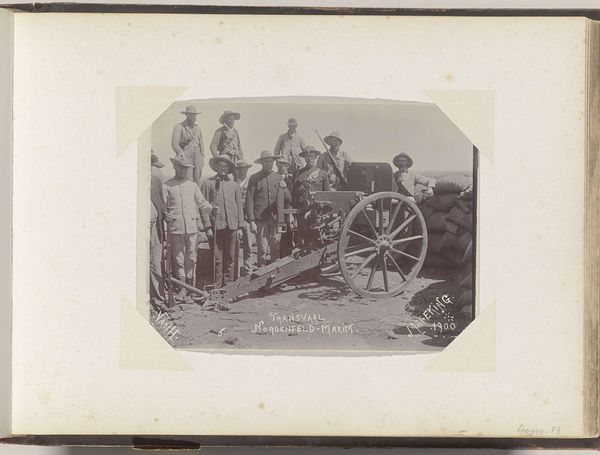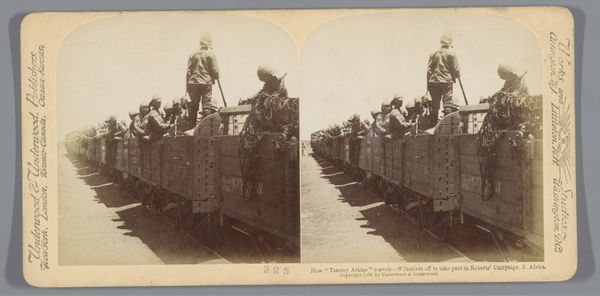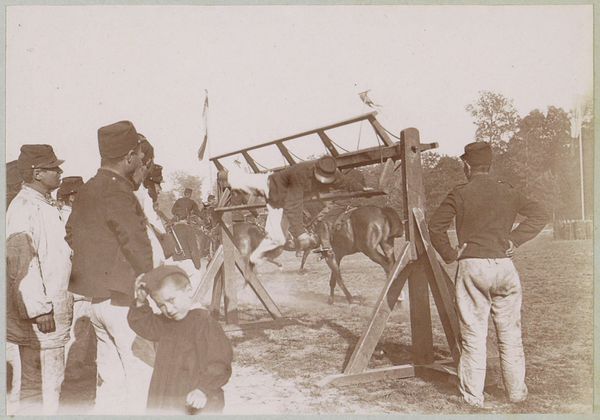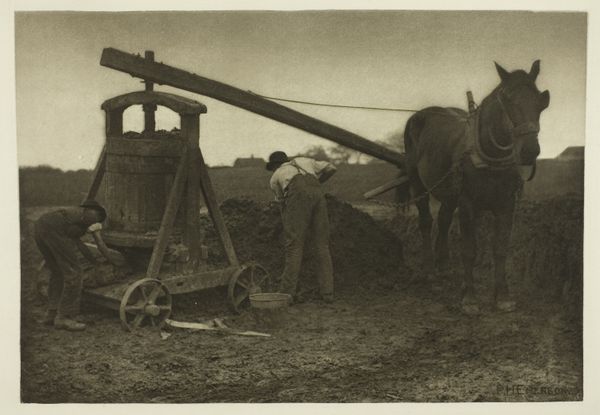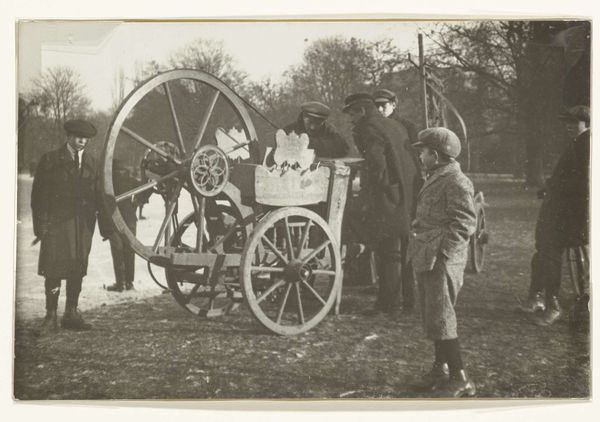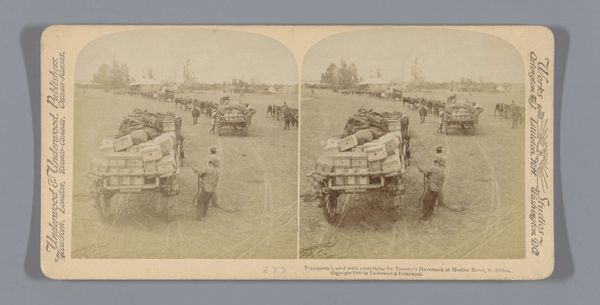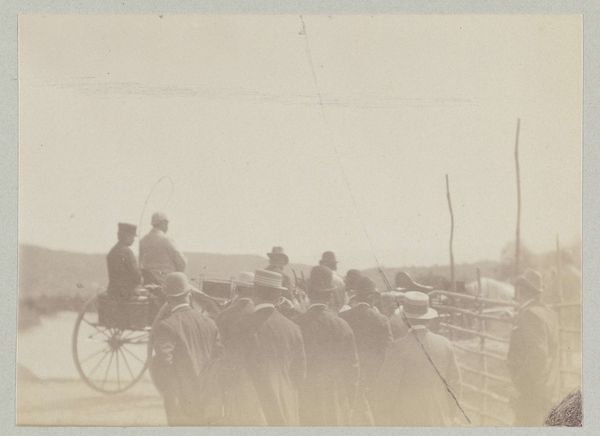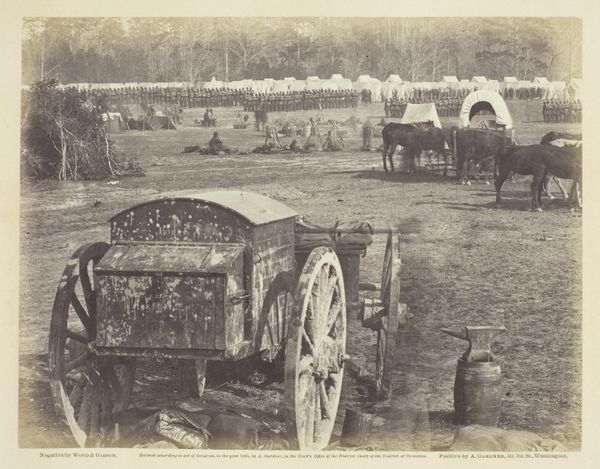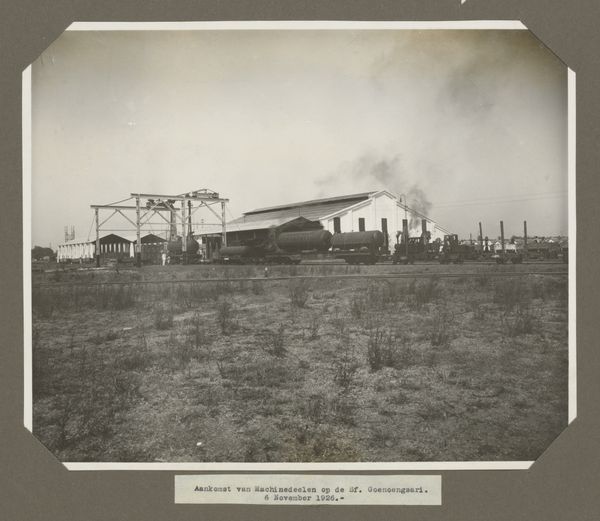
Sinds het begin van den oorlog hebben de Franschen een geduchten voorraad zwaar geschut weten de scheppen. De zware basstem van het nieuwe stuk "270" wordt door de Duitschers al evenzeer gevreesd als het barstend geluid van het stuk "75" 1915
0:00
0:00
#
pencil drawn
#
photo of handprinted image
#
light pencil work
#
photo restoration
#
shading to add clarity
#
pencil sketch
#
old engraving style
#
pencil drawing
#
limited contrast and shading
#
pencil work
Dimensions: height 90 mm, width 140 mm
Copyright: Rijks Museum: Open Domain
Editor: This photorealistic pencil drawing from 1915, titled "Sinds het begin van den oorlog hebben de Franschen een geduchten voorraad zwaar geschut weten de scheppen. De zware basstem van het nieuwe stuk "270" wordt door de Duitschers al evenzeer gevreesd als het barstend geluid van het stuk "75"," depicts a line of artillery in a field. The texture really makes them feel heavy, like imposing pieces of machinery. What stands out to you when you look at it? Curator: I'm immediately drawn to the means of production implied here. We see the guns themselves, the large wheels necessary to move them, and the uniformed workers operating and maintaining these objects of war. The "means of production" extends to the raw materials required for construction and function of these devastating instruments. The sketch seems less interested in the glorification of war, and more a statement about the sheer industrial capacity needed to fuel conflict, especially one of this scale. How might this sketch serve as documentation? Editor: I suppose documenting the weapons shows the power that specific nations had over materials, resources, and manpower to create a machine like this. So, do you think that the artist is trying to show that industrial capacity more than anything? Curator: Exactly. Consider the social context: this image was made during the first World War, a conflict characterized by industrialized warfare. It asks the viewer to consider how war became less about individual heroism and more about industrial logistics and production. Are we looking at art, or at the material conditions that facilitate war? Editor: That’s a good question. So, this image sort of transcends being pro- or anti-war, and makes you reflect on all the unseen efforts and industry behind it. Curator: Precisely. By focusing on the material reality of warfare, we can understand art's role in either perpetuating or interrogating the mechanics of violence. The pencil and paper used to depict such subjects implicates the artist as well in this web of creation, labor, and consumption. Editor: Thanks. It is interesting to consider not just what’s in the artwork, but what was needed to even make it in the first place.
Comments
No comments
Be the first to comment and join the conversation on the ultimate creative platform.
